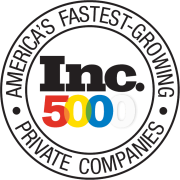As of July, there is still an “extreme” labor shortage impacting both hiring and retention in the United States–especially in the manufacturing industry. In response, manufacturing companies have started recruiting students. And this approach has snowballed, with funding for vocational programming at both the state and federal levels. For instance, Pennsylvania gave $130,000 in new funding to support manufacturing career training programs in southeastern Pennsylvania. In Ohio, there are programs that offer both services to small businesses and also teach students about advanced manufacturing.
For businesses looking to fill open jobs, high schools are on the horizon. That’s developing recruiting strategies for high school students that can help employers find qualified workers. So let’s dive more into the climate of student recruiting and identify steps to successfully leverage this employee demographic.
As we’ve talked about in other posts, many major companies are recruiting high school students to bridge the gap between demand and supply. But this concept isn’t new. An Industry Week article from 2014 reported the focus on recruiting high school students was “picking up steam”. Between 2010 and 2018, 3.6 million high school students reported interest in career education–a 22% increase.
This shift in focus makes sense: Deloitte estimated that 2.6 million Baby Boomers in manufacturing will retire before 2030. In response, high schools are teaching manufacturing skills to prepare more students for a wide range of manufacturing jobs. At the same time, schools and companies alike are working to combat the stigma that all manufacturing jobs still look like they did during the Second Industrial Revolution. So how can companies invest in the future machinists, welders, maintenance technicians, and other crucial individuals that fuel the manufacturing industry?
We propose a two-pronged approach. For immediate hires, you can use digital and print advertising to reach students. This includes social media, pay-per-click ads, and more. Though we’ll leave strategy recommendations for a different post, note that you’ll have to advertise the right information. Presently, research shows that key motivators capturing the attention of job seekers include the following:
- Pay. Companies are offering higher salaries and making it known. Pay transparency is growing. And some states, like Colorado, are requiring companies to include salaries in job listings. Furthermore, many companies are doing what Siemen’s (the German energy company) is doing–offering paid apprenticeships that lead to a guaranteed salary.
- Benefits. We’re talking more than just a 401k. Shorter workweeks, paid vacation time with a stipend, a relocation bonus, and other benefits that speak to an individual’s quality of life. One study reports that 48% of managers provide a signing bonus, 43% are giving more paid time off, and 40% are offering better job titles–so companies are acting on this trend.
Now for the long-term strategy. With minimal internet searching, you kind find all kinds of companies–even giants like Amazon–building partnerships with schools to develop manufacturing training programs. These range from formal training to generous donations. Here are several examples:
- Boeing started a program to train students before graduation. And by 2015, they had already partnered with 29 schools and skill centers. Though not every company has Boeing’s budget, smaller companies could involve local schools in a scaled-down version of this.
- In Ohio, the MAGNET program offers advanced manufacturing training as part of its curriculum–and part of the curriculum requires students to do an internship at a local manufacturing facility. Once the student completes their internship, the company reimburses the program for half of the labor cost. An opportunity like this can be a great way to make connections with new individuals entering the workforce and alleviate the current stress from unfilled positions.
- Coventry High School in Rhode Island established a welding program when Electric Boat–one of the state’s largest employers–announced 14,000 open positions before 2018. So when Electric Boat was ready to fill those positions, students from this school (who were interested) had already developed a strong foundation. Being transparent about future job opportunities like Electric Boat can start a mutually beneficial relationship between you and future workers.
We’ve touched on how to advertise, what to advertise, and how to plan long-term recruiting strategies for high schools. This brings us to the big question: where do you start? From advertising current openings to planning for future ones, PeopleLift can help. Using a combination of AI and human strategy, we can help you scale at a fraction of the cost. Additionally, our ability to generate data that many companies don’t have access to in their main recruitment channels helps us optimize your recruiting campaigns in real-time. The results? We average a 4X ROI to market, a 100% extension rate, and a 100% referral rate. Discover the PeopleLift Difference Today – Contact us to schedule a no-obligation Discovery Call and get your FREE Comprehensive Talent Marketplace Assessment!





